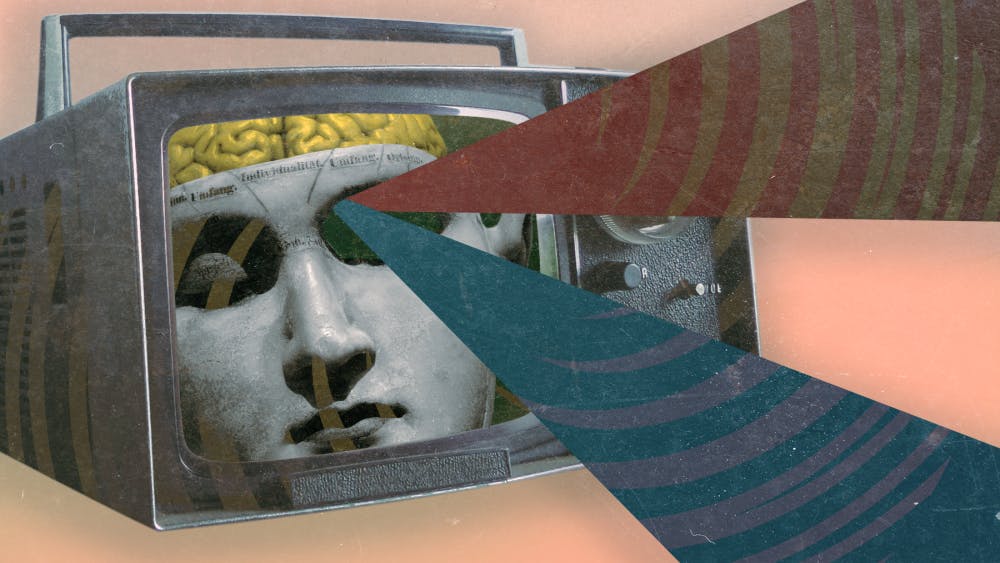Errol Morris’ latest film, “My Psychedelic Love Story,” is a densely packed and energetic documentary exploring the life of Joanna Harcourt-Smith, the lover of renowned psychologist and LSD advocate Timothy Leary. This colorful documentary, which aired Nov. 29 on Showtime, features interviews between Morris and Harcourt-Smith, pulling out the juicy stories and details from her wild life. Morris chronologically traces Harcourt-Smith’s exciting youth and juxtaposes her memories with archival footage and rare FBI tape recordings, resulting in a kaleidoscopic and captivating story.
Harcourt-Smith grew up living a lavish Parisian life and spent her late teens gallivanting around Europe, relishing in the free love of the 1960s and tripping acid with the Rolling Stones. In her mid-20s, Harcourt-Smith met Leary, an established Harvard University (Mass.) psychologist-turned-LSD pioneer who claimed to be the reincarnation of occultist Aleister Crowley, and her life took a dramatic turn. What followed in Harcourt-Smith’s life was a rollercoaster of events encapsulating the playful and apocalyptic chaos of the 60s.
After being arrested multiple times for marijuana possession, Leary escaped prison and fled to Switzerland, where he met Harcourt-Smith. Monetarily supported by a mysterious European billionaire, Leary and Harcourt-Smith traveled around Europe to escape the U.S. government, all while promoting world peace and LSD consumption.
Harcourt-Smith’s story, illuminated through her interviews with Morris, magically spirals out of control. Each new development in her life adds new absurd characters and even more outlandish situations. It’s electrifying to hear details of real conversations Leary and Harcourt-Smith had with John Lennon or Ram Dass, and I can’t help but go along with Morris’ deep romanticization of the 60s. At times, the wild and considerable list of characters, which spanned countless friends, drug dealers and government connections, made the story complicated to follow. Morris also includes scenes of Harcourt-Smith forgetting shocking or humorous details to events throughout her life. One light-hearted example was when Harcourt-Smith recalled a hospital visit she made completely naked and on acid. This almost frivolous back-and-forth underscored Harcourt-Smith’s forgetful playfulness, which may have beens a product of copious amounts of LSD she consumed throughout her life. Her stories were consistently engrossing, even if they appeared trivial to the central narrative.
Furthermore, Harcourt-Smith also discusses how her mother raised her alone, and taught her to manipulate others, specifically men, with her body and charm. Her mother was the lover to many powerful men in the world, including major military leaders, musicians, and random celebrities. Harcourt-Smith grew up watching her mother build powerful connections through her status as the lover of powerful men. This clearly made an impact on Harcourt-Smith, as she describes manipulating many different powerful and rich men to help free Leary. This layer of manipulation underscores the central conflict of the documentary: can Joanna Harcourt-Smith be trusted? Was she ever truly in love with Leary, or was she manipulating him like her mother did to the many men before her?
The air of distrust surrounding Harcourt-Smith thickens as the film progresses. Due to his frequent imprisonment, Leary convinced Harcourt-Smith to collaborate with the FBI to hasten his release. Her cooperation with the government forever tainted her reputation with much of the hippy community, branding her as a traitor and a fraud. The film goes into detail about this double identity as a hippy-queen LSD leader turned FBI collaborator, further emphasizing her history of manipulating those around her. Due to this, “My Psychedelic Love Story” demands the viewer to question Harcourt-Smith’s character and her story, but I still came away totally in love and believe every word of her story.
Morris phenomenally crafts a psychedelic atmosphere throughout, which helps the film live up to its name. The documentary is interspersed with distorted tarot cards, old animated clips and subtly warping images of the relevant people. Sometimes, Morris stretches the psychedelic imagery a little too far, making it a bit corny and annoying. For the most part, however, the hallucinatory imagery playfully complements the narrative. The combination of this bizarre imagery and convoluted series of events described by Harcourt-Smith creates an intense and slightly overwhelming hallucinogenic flavor to the whole film.
I came away totally in love with “My Psychedelic Love Story.” Harcourt-Smith’s complex life is a ripe subject for a focused documentary, and Morris’ mastery of the 60s made the film informative and genuine. For anyone curious about the 60s, psychedelics or the evolution of American counterculture, this movie is a must watch. Gripping and wildly entertaining, “My Psychedelic Love Story” deserves only the highest praise.






